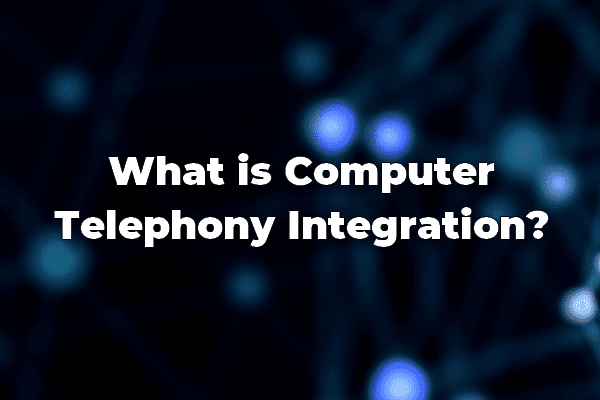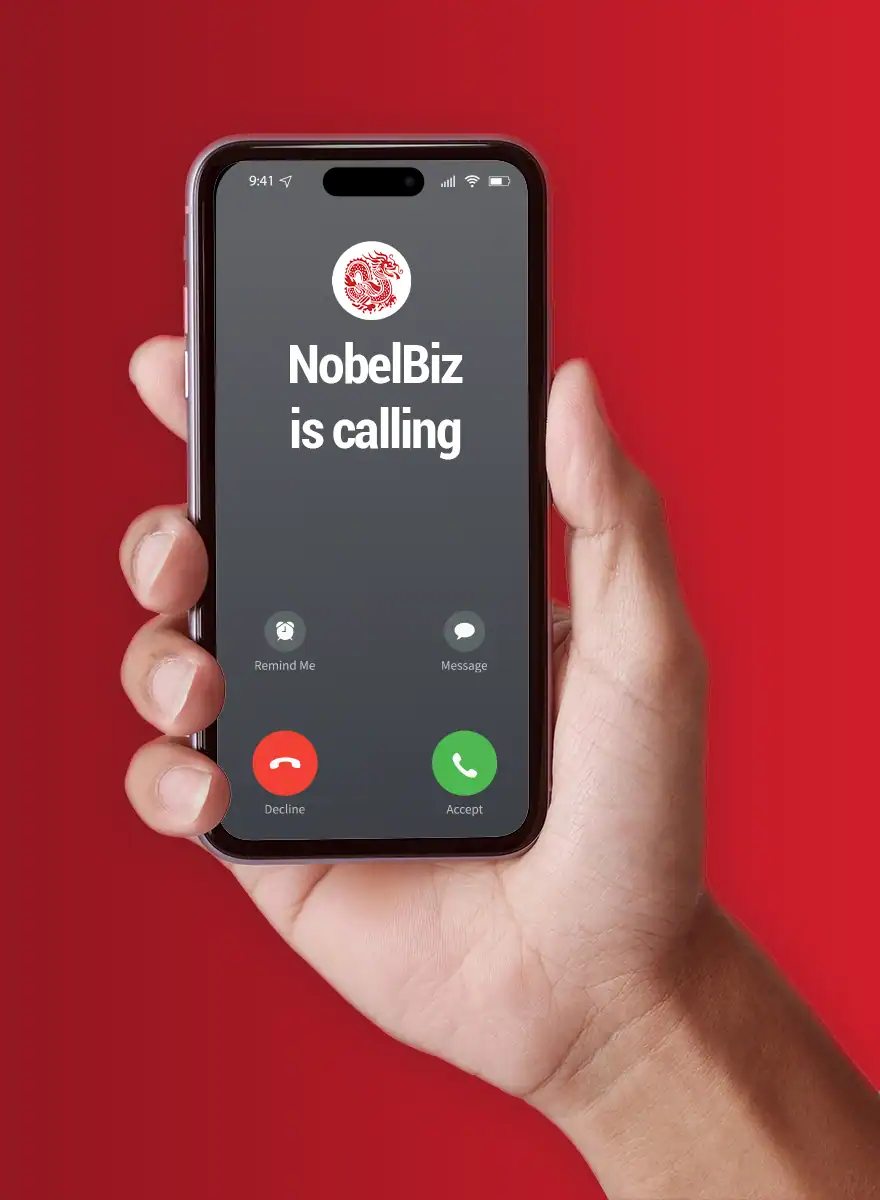Consumers have become more competitive and erratic as a result of the rise of social media and new emerging technologies. Buying patterns and preferences shift in reaction to their tastes, trends, and digital environment. And this is a decisive factor in the relationship between brands and clients.
With the growth of online shopping, brands have had to redefine their engagement strategies and by extension contact centers.
Contact centers are becoming more advanced and they are also being impacted by several new technologies. Today we talk about Omnichannel and consumer 2.0. The telephone in contact centers, a more conventional but still commonly used channel, has not escaped this resurgence and that’s where CTI or Computer Telephony Integration comes in.
In this article, we detail everything about, computer telephony integration software, its benefits, and how it works.
What is CTI – Computer Telephony Integration – in Call Centers?
 CTI or Computer Telephony Integration is a technology that was developed in response to the need for companies to connect their telecommunications networks with their computers. CTI incorporates voice, dial, video, or voice-over-IP phone technologies that establish new and better ways to communicate.
CTI or Computer Telephony Integration is a technology that was developed in response to the need for companies to connect their telecommunications networks with their computers. CTI incorporates voice, dial, video, or voice-over-IP phone technologies that establish new and better ways to communicate.
In technical terms, it is a combination of advanced audio, data communication, and voice interface technologies that allows interactive calls to be conducted over IP or the internet. This allows communication from any location around the world to be conducted through one call center with no difference in quality, productivity, or cost between a normal inbound call or an outbound call.
History of the CTI in call centers
In the early ’90s, the first CTIs were introduced in businesses. However, it wasn’t until the end of the decade that they were really known as a must-have technology. Because of its versatility, which required businesses to produce a shape feed, it was seen as a completely separate solution at the time.
Then the industry moved from a Call Center method of manually labeling phone numbers, where it was impossible to check who the caller was, to different Call Center Software that allows thousands of different features as technology advanced towards a customer-centric era.
This is when CTI technology and tools come into effect, easing the workload of contact center agents and optimizing efficiency while also improving the customer service quality.
CTI integration tools
It’s easy to assume that call center CTI technologies can only be effective when there is a large volume of phone calls.
On the other hand, this technology is useful for all forms of campaigns. These are some of the most important CTI integration tools:
Information Pop-up display
The agent can see a pop-up display on his computer with the customer’s phone number while using CTI.
By simply clicking on the window, he can answer the call. Prior to this key, the customer’s file in the CRM will open immediately due to the identification of the customer’s number.
As a result, the file shared with the client with the incoming call number will appear immediately in the agent’s CRM display, ensuring customized and high-quality customer service while also avoiding waiting time.
One-click contact
The agent can reach one of the clients from files within the contact center CRM, pick the customer he needs to contact and make the call directly by pressing a button.
The call will be sent through with the contact center technology, and it will be of the highest quality. Since the agent will have all of the knowledge about the individual who was called, as well as the ability to make extra comments or simple changes.
CTI linking to the CRM
From a technological standpoint, a Contact Center is an improved form of a Call Center since it incorporates new internal and external networking mechanisms in addition to voice, such as email, voice, social media, and webchat.
When you link CTI to CRM tools, your contact center can use it to efficiently manage high-volume calls while monitoring all communication operations via CTI integration.
What is the computer telephony integration system’s purpose?
To sum up the purpose of CTI in contact centers:
- Call routing: It is possible to “direct” a call at the CTI server level based on the declaration of certain criteria. A call processing program with a routing table is employed in this scenario. The routing choice might be based on the caller’s number, the date, the time of the incoming call, and the availability of the called party or the teleoperator.
- Call Control: CTI technology allows you to initiate another call while on the current one, conference it, or transfer it. Of course, the call control can be completed with a review of the computer data associated with the calls.
- Call origin: Automatic callback and directory sharing are additional features of the CTI system.
How does computer telephony integration work?
First and foremost, the call center architecture computer telephony integration CTI is composed of:
- The Private Automatic Branch Exchange (PABX) is a private telephone switch. It is frequently used in businesses and enables the usage of internal communication.
- The CSTA is an application-level communication method that connects computer and telephone devices.
- PCBX (Private Computerized Branch Exchange): A microcomputer that can act as a telephone exchange, the PCBX (Private Computerized Branch Exchange) is useful in the world of banking.
- Third-party server: A server that manages the “client” machines. The server determines how calls are delivered to PBX extensions based on the CTI software utilized.
- DID: Direct Inward Dialing (DID) is a service provided by several telecom carriers to clients who have a PBX system.
- CTI server: A communication system that includes a CTI API. The interface is the link between a telephone system and an information system.
How CTI functions
In order to understand how CTI works, you have to understand how it is integrated into a company’s technical infrastructure.
CTI is based on a blend of sound and voice technologies:
- Speech-to-text: a technology that reads text, hears sounds and responds to them by producing speech that is intelligible to human ears. It is found in most phones today and is available to the public.
- Speech-to-text via the web: a software program that reads text from the web and processes the speech into understandable words that can be spoken by a customer service agent. This software is found on most of the major telecommunications company websites today.
- Speech-to-speech over the phone: in order for a customer to conduct an automated call from their own computer, they must have this software installed on their computer.
- Voice Command: when a customer requests a call center agent through their computer, they will be able to program the computer with the necessary information to call their agent through the company’s website.
 CTI’s emergence was only conceivable due to the collaborative development of telephone networks (PSTN or ISDN), automated exchanges, and computer technology. In practice, CTI entails the establishment of a CTI server connected to the firm’s computer network, which will manage telephone interactions and data pertaining to consumers in contact with the company. In reality, while the PABX handles the telephone connections between a correspondent and a contact center operator, it is the CTI server that handles the administration of this communication by determining which operator to send the caller to.
CTI’s emergence was only conceivable due to the collaborative development of telephone networks (PSTN or ISDN), automated exchanges, and computer technology. In practice, CTI entails the establishment of a CTI server connected to the firm’s computer network, which will manage telephone interactions and data pertaining to consumers in contact with the company. In reality, while the PABX handles the telephone connections between a correspondent and a contact center operator, it is the CTI server that handles the administration of this communication by determining which operator to send the caller to.
To do this, the CTI server receives all available data on the status of telephone communications (which operators are free or busy, etc.). The CTI then calculates the actions to be taken based on these data as well as the information specified elsewhere (for example, automated direction of clients towards a specific type of operator) and communicates the instructions to the PABX, allowing the caller to be connected to an operator. The CTI server receives information from the PABX and the telephone network: the arrival of a call, the call received by an operator, triggering the dialing process, hanging up, and so on.
As a result, the CTI server has a real-time picture of the call center’s status and each of its locations. It is also given information that will allow it to initiate activities. The telephone network will supply it with information such as the caller’s number, the number dialed, the geographical origin of the call, and so on. The server can then search its database for information on the call center itself (pools of agents grouped by skills, schedules, occasional unavailability, etc.).
Can the interactive voice response (IVR) improve the CTI?
Simultaneously, an interactive voice response (IVR) can be utilized to improve the CTI server’s understanding of the caller and the cause of the call (order, information, etc.). Based on this data, the IVR server can then commence a procedure to route the call to an available agent with the relevant capabilities, place the call on hold if necessary, or even begin a call sequence on an agent’s extension.
At the same time, the CTI server can initiate queries to gather information about the caller from its database and then communicate it to the workstation of the agent managing the call. Whether the conversations are incoming or outbound, all information about each communication is captured in a log controlled by the CTI server, allowing exact statistics on the functioning of the call center and the work of each agent to be established. These statistics may also be used to improve service quality and raise customer happiness, for example, by allowing you to react appropriately when waiting times are too lengthy or the call center is oversaturated.
What are the benefits of CTI integration for contact centers?
Thanks to client file reviews, modern computer telephony integration software have a totally new approach and a higher level of customer care. However, this is only the tip of the iceberg when it comes to advantages, and here are the most crucial ones for contact centers:
Enhanced productivity for call center agents
The technology does indeed allow you to limit your calls to save between 10 to 20 seconds each time. CTI cuts call time by around 10% in a contact center, where it is standard procedure to shorten calls.
Furthermore, CTIs enhance the development of statistics that enable the study of the interdependence between the output of the call and the time spent on it, in addition to other functionalities such as reporting.
CTI can enhance your productivity through:
- Phone System
- Voice
- IVR
- IMS
- SMS
- Profiles Integration
- Communication Access
Enhanced productivity for call center agents
For contact centers, CTI provides supervision and reporting interfaces. In fact, the supervisors in contact centers can have access to a tool that helps them to display accurate data on agents’ results on all calls taken and in real-time.
As a result, you can have metrics and data such as:
- Number of picked up calls,
- Rate of missed calls, total contact time,
- Length of agents break,
- Monitoring agents’ results during phone calls,
- Measuring agents’ or teams’ success over a set period of time,
- User patterns that can be used to gauge customer loyalty,
- Assigned calls to the agent who are ideally qualified to respond to the caller’s request (according to language, geographic location, etc);
- Following the progression of a customer’s lifecycle.
So, when an agent is having difficulties, the supervisor can provide immediate and accurate assistance. These numbers are obtained so that business owners can organize staff better by executing a plan based on these metrics.
Reduced Operation Costs
Indeed, Contact Center can improve its financial performance by enhancing consumer relationships and lowering operational costs. CTI requires systems to be integrated with unified control of customer experiences. The internal call center system is then redesigned to improve capacity and customer loyalty.
Every day, contact centers accept a vast number of calls, which necessitates the use of multiple agents to effectively address them.
Putting callers on hold or dropping any of them will result in higher prices and a loss of business. These costs can be greatly decreased with CTI and the production of comprehensive statistical data through:
- Shortening total call duration increases the number of contact minutes per hour and, as a result, lowers labor costs.
- Minimizing lengthy wait times for consumers in busy conditions when callbacks are automated.
One Dashboard to manage everything
Many contact centers of all types are also using management tools to further handle their client databases. One of them is CRM (Customer Relationship Management) applications.
By incorporating customer relationship management functions (CRM, ERP, ticketing, etc. ). Your agents no longer have to juggle through various databases to locate information about the customer. Instead, all of the data is consolidated on a single and unified dashboard.
The opportunity to better satisfy the needs of these customers is a significant benefit of this form of CTI and CRM linking.
On the other hand, all various communication channels (phone, email, social media, and webchat) are handled from a common interface, which is beneficial to the agents.
User Experience
 The computer telephony integration system allows client relationship managers to be more competitive for their agents. The positive influence on company competitiveness is clearly visible, as it is expressed in results, efficiency, and profitability. However, in order for this to occur, client relationships must still be regarded as essential activities.
The computer telephony integration system allows client relationship managers to be more competitive for their agents. The positive influence on company competitiveness is clearly visible, as it is expressed in results, efficiency, and profitability. However, in order for this to occur, client relationships must still be regarded as essential activities.
In this regard, CTI integration is a major benefit as it supports and improves the user experience with the consumer. The routing of the call to the caller is streamlined, and the caller’s waiting time is shortened. CTI enables many solutions to be open, such as redirecting the client to a premium facility, moving prospecting calls to a manager in a specific industry, and so on.
No call routing errors: CTI technology eliminates the complications that can arise during the routing of calls, as it integrates voice and the internet through a single interface.
Tighter security: CTI ensures that the communication between your computer and the company’s infrastructure is private and secure.
Enhanced call quality: by integrating the speech-to-text system with CTI, companies can offer improved quality call calls, which ensures that the communication between the call center agent and the customer is clear and not distorted.
Enhanced customer service: companies using CTI have access to automated outbound customer service calls, as well as online customer service applications for the simple management of customer support, such as tracking issues, prioritizing calls, and taking payments.
Improved support: instead of having a customer contact you via email and then you having to run a script through a help desk software that provides assistance to the customer, you simply send an email and the automated service will call the customer directly.
Conclusion: What are customers expecting from your contact center?
Customers’ demand has risen significantly as a result of social media growth, and offering an unlimited number of choices when they reach, necessitates a company’s differentiation.
The best way to be one step ahead of your competition is by providing an excellent customer experience. That is an experience where your customer feels safe, comfortable, and taken care of.
In short, today’s customers will appreciate:
- Personalized care
- Details and accurate information from the agent
- Maintenance of the dialog line, no matter the communication channel
- Resolution at the first contact
In conclusion by coupling telephony with business applications, CTI provides greater control over customer data in order to better interact with them and thus offer them a high-quality customer experience. But we live in the consumer era, which means being where the customer wants you to be.
NobelBiz Omni+ is a true Omnichannel cloud contact center solution that allows you to navigate easily and seamlessly between all communication channels (phone, email, social media, SMS, and webchat). Not to mention absolute mastery of customer data with easy integration to your CRM.

Michael McGuire is a contact center industry expert with almost two decades of experience in the space. His experience includes roles as Director of Contact Center Digital Transformation at NobelBiz, and as Director of Operations at FLS Connect, managing multiple call centers. As President of Anomaly Squared and Targeted Metrics, Michael successfully transitioned companies into remote operations and significantly boosted revenues. With a strong background in customer service, leadership, strategic planning, and operations management, Michael excels in driving growth and innovation in the call center space.
Mike is also a proud Board Member for R.E.A.C.H Trade Group, promoting consumer protection and satisfaction and Co-host of the Off Skripted Podcast – a show about Life, Call Centers and everything in between.







